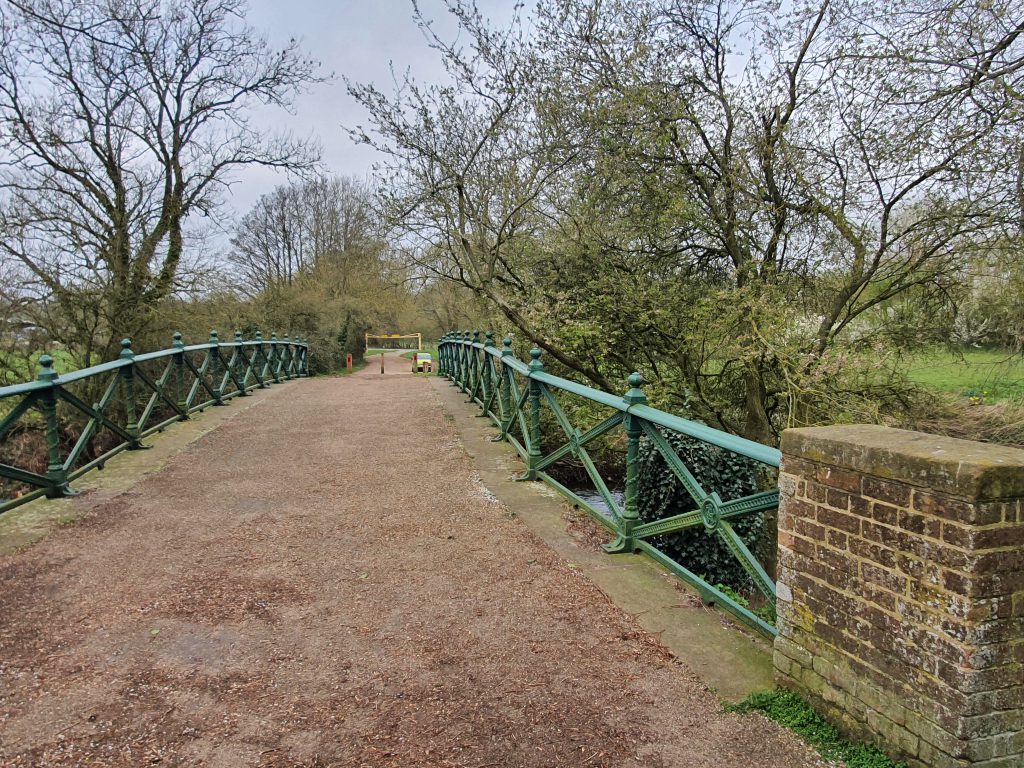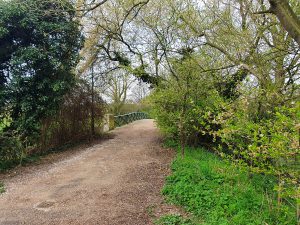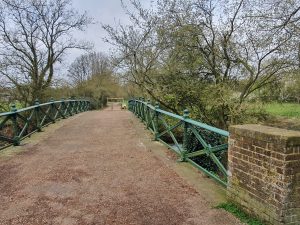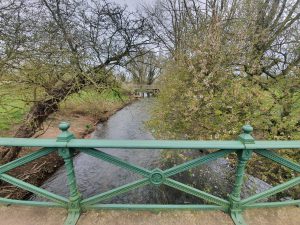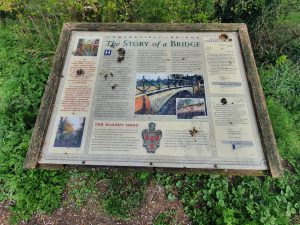Homersfield – Homersfield Bridge
This is the path up to Homersfield Bridge, where there has been a crossing for centuries, but the current structure was constructed in 1869. And for those who like concrete (I’m sure that it has a niche following), this is one of the earliest concrete bridges in the country. This is also the county border, so this side is in Suffolk and the other end is in Norfolk.
Clicking on this image will make it appear in a larger size and it shows where Church Lane crosses the river (this older bridge) and where the new B1062 bypasses Homersfield.
The bridge was designed by Ipswich architect Henry Eyton and was installed by Messrs W & T Phillips of London, under the supervision of Sir Shafto Adair. Adair was the Baronet of the Flixton Estate and the coat of arms of his family is attached to the bridge. Since he paid for it, it seems only fair that he gets to put his family crest on the side. Adair also ensured his initials of SA were placed on the balusters and Eyton also added a panel with his name on it (he added several, perhaps he thought some would fall off).
The bridge could support a weight of around 200 tons, although it seems that this was a bit made up as they had no way of testing it. Before the bridge opened to the public they put a heavy roller with four horses on the structure, as well as a waggon with flour sacks and two more horses. They were delighted that the bridge didn’t fall down, but their test involved just 5 tons of weight, somewhat off their maximum.
There was a toll for vehicles to use the bridge, to recover at least some of the costs, but it has always been free for pedestrians to walk across. There was a slight problem with this though insomuch there is a passable ford that can be driven through near to the bridge, as long as the water isn’t too high. The local press reported in 1933 that some vehicles were getting stuck in the water in order to save paying the toll to use the bridge. Slight disaster also hit the bridge in that year when someone drove off rather too quickly after paying the toll and they managed to take part of the bridge with them, which it’s fair to say isn’t ideal. The estate worker got the details of the car’s registration plate, but the driver did a bit of a hit and run and cleared off before his name could be taken.
The bridge crosses the River Waveney and it was part of a restoration effort in the 1980s after it had rather fallen into disuse since the construction of a new bridge. An excellent job was done, although proving ownership of the bridge was difficult and a compulsory purchase order was required in the end.
A little dirty, but this is a rather useful and informative sign about the bridge.

